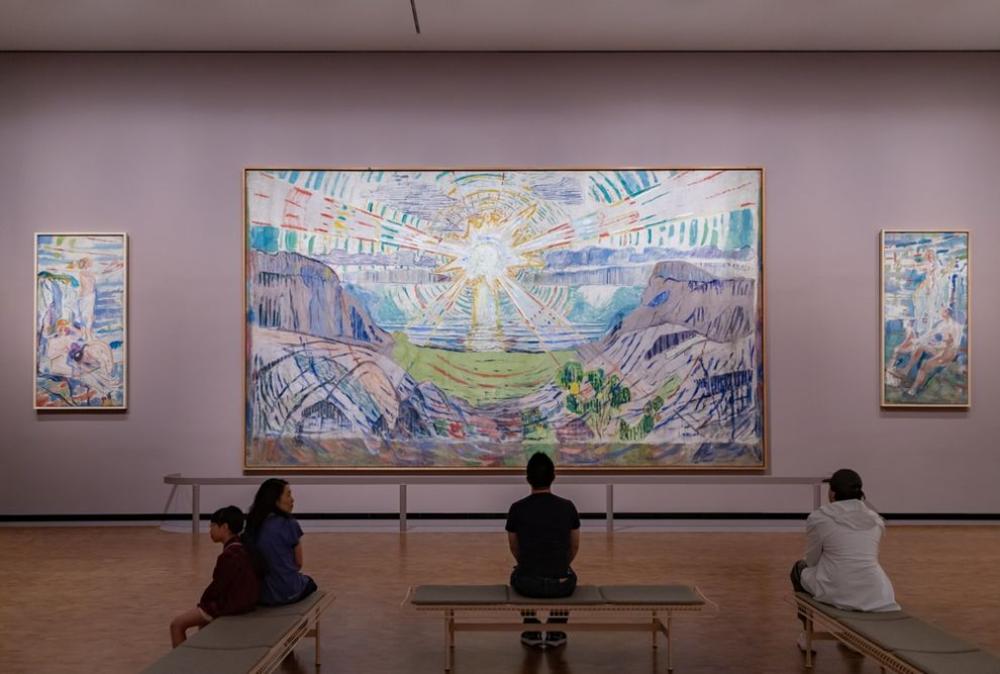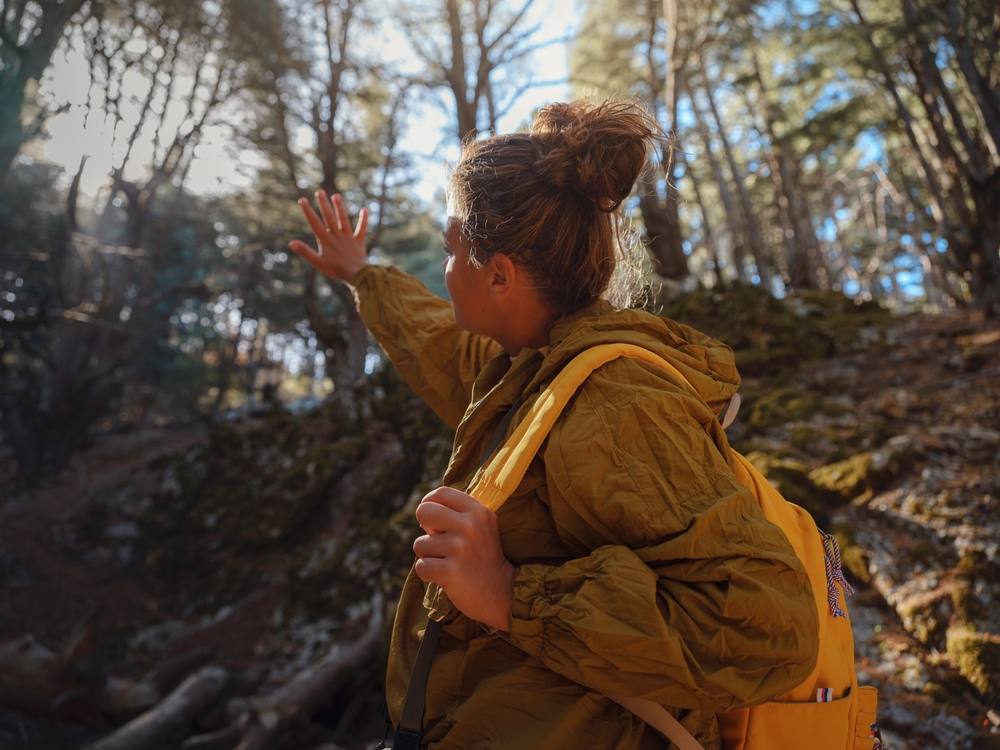Have you ever looked at a beautifully crafted Norwegian sweater and thought, 'How can I create something like that?' Norwegian knitting is more than just making garments; it's a time-honored tradition filled with history and artistry.
In this guide, we'll take you through the process step by step, from selecting the perfect yarn and tools to mastering essential techniques like the long tail cast-on and Norwegian purl. Whether you're a complete beginner or looking to improve your skills, you'll soon be crafting these iconic patterns that have warmed the hearts of Scandinavians for generations. Ready to get started?
What Is Norwegian Knitting?
Norwegian knitting is a variation of the Continental style, with a key difference in how the purl stitch is executed. Like Continental knitting, yarn tensioning is done with the left hand, but Norwegian knitting keeps the work close to the needle tip, using minimal movement for tensioning.
The yarn is typically controlled by the middle finger or fingertips along the left needle. What sets Norwegian knitting apart is its unique purl stitch, which is worked without moving the yarn to the front, making it quick and efficient. This method is especially useful for knitters seeking to improve speed and precision in stockinette stitch.

The Unique Charm of Norwegian Knitting
Norwegian knitting dates back to the 16th century and has grown into a vibrant cultural tradition that knits together history, art, and national pride. One of its most iconic creations, the Selbu mittens, became popular in the mid-19th century. These mittens are famous for the selburose pattern, a star-like symbol representing protection and heritage.
Another beloved design is the Marius sweater, created in the 1950s. Featuring bold colors inspired by the Norwegian flag, it embodies national pride and tradition. Norwegian knitting's intricate colorwork techniques, like knitting with two colors simultaneously, allow for stunning patterns while providing extra warmth.
Patterns often symbolize nature or folklore, such as snowflakes and flowers, reflecting a deep connection to Norway's landscapes. Today, almost everywhere you go in Norway, you'll see someone wearing hand-knitted sweaters, scarves, or mittens in a wide variety of color combinations, no matter what the weather is like.
How To Start Off With Your First Norwegian Knitting Pattern
https://www.youtube.com/watch?v=NqIztHuFRcE
Getting started with your first Norwegian knitting pattern is exciting, but it's important to follow a few steps to ensure success. Begin by choosing a beginner-friendly pattern, such as Selbu mittens or a Marius sweater. Once you've selected your pattern and gathered your materials, follow these simple steps:
Step 1: Choosing the Right Colors for Your Norwegian Knitting Project
Selecting the perfect color combination is essential in Norwegian knitting as it highlights the intricate patterns and symbolism. Traditional designs often use contrasting colors, like white and navy, to emphasize the motifs.
For classic patterns like the Selbu mittens, black and white are popular choices, while the Marius sweater traditionally uses red, white, and blue to reflect the Norwegian flag.
When choosing your colors, consider the following:
Contrast: High contrast between colors will make your pattern stand out.
Personal style: You can experiment with bold, modern colors or stick to the traditional palette for a more classic look.
Yarn type: Ensure the yarn you choose comes in your desired color range while maintaining the proper texture and weight.
Step 2: Estimating the Yarn for a Long Tail Cast-On
To start your project using the long tail cast-on, you'll need to estimate the correct yarn length. A practical rule is to multiply the width of your swatch by three, ensuring you have enough yarn for casting on stitches.
After measuring, create a slip knot by twisting the yarn around your fingers, yarn over, pinch the loop, and pull the yarn through to form the knot. Place the slip knot on your needle without twisting, and keep it slightly loose to prevent tight stitches that can make knitting more difficult. This Norwegian cast-on technique lays the foundation for smooth, even stitches throughout your project.
Step 3: Long Tail Cast-On Technique
The long tail cast-on technique is a staple in Norwegian knitting cast-on methods. To begin, position your yarn in the 'slingshot' style. Hold the yarn with your thumb and forefinger, forming a loop (the tail yarn is controlled by your thumb and the working yarn by your forefinger).
Now, insert your needle into the loop on your thumb, wrap the yarn from your forefinger around the needle, and pull it through the loop. Tighten the stitch, but not too tightly, and repeat the process until you've cast on the required number of stitches for your project.
Step 4: Knitting the Norwegian Way
The Norwegian knitting technique is known for its efficiency and ease of movement. To knit Norwegian style, hold the needle with the stitches in your left hand and the empty needle in your right hand. The yarn is tensioned in your left hand, similar to Continental knitting, which reduces hand movement.
Insert the right needle from front to back into the first stitch, pick the yarn with your right needle, pull it through the stitch, and slide the stitch off the left needle. Focus on keeping your yarn tension controlled by holding the yarn close to the needle. This ergonomic approach helps reduce strain on your hands, making it easier to knit for longer periods without discomfort.

Step 5: Norwegian Purling Technique
The Norwegian purl stitch is distinct from traditional purling because it requires fewer hand movements. In Norwegian purling, the yarn stays behind the needle throughout the process, eliminating the need to bring it to the front like in traditional methods.
Insert your needle into the stitch as you would for a regular purl, but keep the yarn at the back of your work. Twist the right needle slightly to pick up the yarn from behind and pull it through the stitch. This technique is efficient, maintains even tension, and reduces hand strain, making it faster and more ergonomic than traditional purling methods.
Step 6: Alternate Between Knit and Purl Rows
To create different textures in Norwegian knitting, alternating between knit and purl rows is key. For a smooth stockinette stitch, simply knit one row and purl the next. This alternation creates a fabric with knit stitches on one side and purl stitches on the other, perfect for garments like sweaters.
To achieve a garter stitch, knit every row without alternating. This technique gives your knitting a bumpy texture on both sides and is great for scarves or blankets. Mastering the balance between these stitches adds versatility to your projects, allowing you to create various patterns and textures effortlessly.
Step 7: Binding Off (on the Right Side)
Binding off Norwegian knitting is the final step in completing your project. Here's how to bind off knitting:
Knit the first two stitches.
Use the left needle to lift the first stitch over the second stitch on the right needle and drop it off.
Knit another stitch, then repeat the process of lifting the first stitch over the second until you've bound off all stitches.
Be sure to bind off loosely to maintain elasticity in the finished edge, especially for garments like sweaters or mittens.
Once you're left with one stitch, cut the yarn, leaving a small tail, and pull it through the last loop to secure the end.
Tips for Norwegian Knitting Success
Here are some essential Norwegian knitting tips to help you master this technique:
Tension control: Tension comes from the needle, not from holding the yarn too tightly. Let the needle guide the tension for smooth stitches.
Relax your hands: Keep your hands loose to prevent strain and allow for more comfortable knitting.
Start simple: Begin with easy projects like scarves or dishcloths to practice the technique and build confidence.
Practice regularly: The more you knit, the more natural the movements will become, allowing you to tackle complex patterns with ease.
How to Customize Your Norwegian Knitting Projects
Custom Norwegian knitting patterns allow you to express your creativity. Start by experimenting with colors. Traditional designs often use contrasting hues, but you can choose shades that reflect your personal style while maintaining that classic Scandinavian look.
You can also adjust the pattern's size by increasing or decreasing the number of stitches and rows to achieve the right fit. Another option is to combine motifs from different patterns to make your project stand out. Adding a personal touch to a traditional pattern makes your knit uniquely yours, so feel free to experiment and make it your own!
Why Norwegian Knitting is Taking the Craft World by Storm
Norwegian knitting is taking the craft world by storm because it offers more than just relaxation. It provides a deep connection to tradition and culture.
Not only does it deliver the well-known benefits of knitting, such as stress relief and mindfulness, but it also allows crafters to create intricate, meaningful designs rooted in history.
Imagine renting a campervan in Norway, gazing out over breathtaking fjords, and knitting in the serene landscapes that have inspired these beautiful patterns. What could be more authentic and fulfilling than immersing yourself in both the craft and the country that shaped it?



 By
By 






